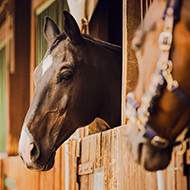New figures show rise in popularity of pedigree cats
Cats Protection research shows that 38 per cent of cats acquired in 2022 were pedigrees.
New research by Cats Protection has revealed an increase in the number of people acquiring pedigree cats such as Persians, Sphynxes, Bengals and Scottish folds. Results showed that 38 per cent of cats acquired in 2022 were pedigrees. This equates to 600,000 cats. Forty-seven per cent were non-pedigree which equates to 750,000 cats.
In response to the findings, Cats Protection has launched its ‘more than just a moggy’ campaign to promote the positive qualities of non-pedigree cats, and raise awareness of the potential health and behaviour issues of pedigree breeds.
Cats Protection found that 47 per cent of pedigree cat owners had reported that their cat had been diagnosed with a health issue, compared with 29 per cent of non-pedigree cat owners. The health issues included respiratory disorders, asthma and arthritis.
The charity also found that owners of pedigree cats had paid more for their pets, with 64 per cent paying between £101 and £2000. Twenty-three per cent of non-pedigree cat owners had paid over £101.
The charity’s research showed that 29 per cent of pedigree cat owners chose them for the potential to get social media likes for them, compared to five per cent of non-pedigree cat owners. Thirty-one per cent of pedigree cat owners set up a social media profile for their cat, compared to seven per cent of non-pedigree cat owners.
Nicky Trevorrow of Cats Protection’s behaviour team said: “While moggies still make up the majority of cats in UK homes, it is clear that pedigrees are coming more and more in vogue.
“Breeds such as Persians, Sphynxes and Scottish Folds might be trending, but these cats generally come with a higher price tag and a greater risk of health and welfare problems."



 Zoetis has launched a new survey to identify management techniques for Equine Herpes Virus (EHV).
Zoetis has launched a new survey to identify management techniques for Equine Herpes Virus (EHV).